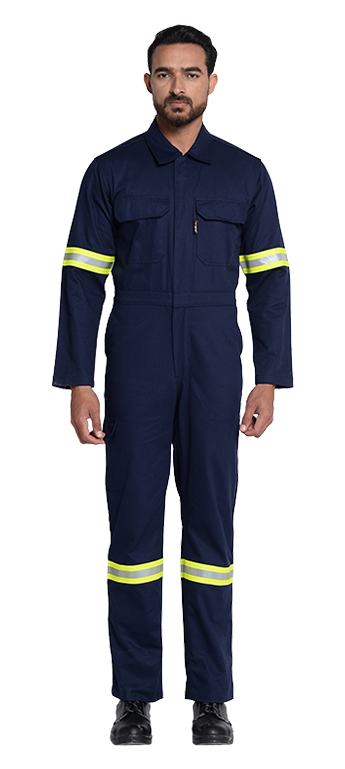
In industries where the risk of fire hazards is inherent, ensuring the safety of workers is of paramount importance. Flame-resistant (FR) coveralls play a crucial role in providing protection against such risks. However, it’s not just about safety; comfort is equally vital for workers who spend extended hours in challenging environments. This article delves into the intricate balance between comfort and compliance, guiding you through the process of finding the perfect FR coveralls for a harmonious blend of safety and ease.
Understanding the Significance of FR Coveralls
Flame-resistant coveralls are designed to safeguard workers from the potentially catastrophic consequences of fire-related accidents. They act as a protective barrier, preventing the ignition, spread, and intensity of flames, thus reducing the risk of severe injuries. In demanding industries such as oil and gas, manufacturing, and construction, where exposure to flammable substances is common, FR coveralls are not just a precautionary measure but a necessity.
Balancing Comfort and Compliance
Fabric Technology:
The foundation of comfort in FR coveralls lies in the choice of fabric. Advanced materials like Nomex and Kevlar offer not only flame resistance but also lightweight and breathable properties. These fabrics allow for flexibility of movement, ensuring that workers can perform their tasks without feeling encumbered.
Fit and Design:
The fit and design of FR coveralls are critical factors in ensuring both comfort and compliance. A well-fitted coverall not only enhances ease of movement but also reduces the risk of snagging on equipment. Elasticated waistbands and adjustable cuffs contribute to a secure fit, offering a personalized level of comfort for each worker.
Moisture Management:
Working in environments that pose fire hazards often means dealing with elevated temperatures. FR coveralls with moisture-wicking properties help manage sweat and moisture, keeping workers dry and comfortable throughout their shifts. This is particularly crucial in maintaining focus and preventing discomfort.
Breathability:
Ventilation is a key aspect of comfort in any workwear. FR coveralls with strategically placed vents or breathable panels allow for the circulation of air, preventing overheating and ensuring a more pleasant working experience, especially in warmer climates or confined spaces.
Durability and Longevity:
While comfort is essential, durability is equally crucial. High-quality FR coveralls are designed to withstand the rigors of demanding work environments, ensuring that they remain effective and comfortable for an extended period. This not only contributes to the well-being of the workers but also represents a cost-effective investment for employers.
Compliance with Industry Standards
NFPA Standards:
The National Fire Protection Association (NFPA) sets the standards for flame-resistant clothing. FR coveralls that meet or exceed NFPA standards provide assurance that they have undergone rigorous testing for flame resistance, thermal protection, and durability, ensuring compliance with industry benchmarks.
ASTM International Standards:
The American Society for Testing and Materials (ASTM) establishes standards for a wide range of materials, including those used in FR coveralls. Ensuring that the coveralls meet ASTM standards is crucial for guaranteeing their effectiveness in protecting against fire-related hazards.
OSHA Regulations:
Occupational Safety and Health Administration (OSHA) regulations mandate the use of flame-resistant clothing in specific industries where workers are at risk of exposure to flames or electrical arcs. Compliance with OSHA standards is not only a legal requirement but also a fundamental aspect of prioritizing worker safety.
Choosing the Right FR Coveralls
Risk Assessment:
Conducting a thorough risk assessment is the first step in choosing the right FR coveralls. Understanding the nature of the work environment, potential fire hazards, and the level of protection required allows for a more informed decision when selecting coveralls.
Fabric Selection:
Consideration of fabric properties is pivotal. Nomex, inherently flame-resistant and lightweight, is an excellent choice for optimal comfort. Kevlar, known for its strength, is another viable option. Understanding the specific needs of the work environment helps in selecting the most suitable fabric.
Customization Options:
Opting for FR coveralls that offer customization options ensures that each worker receives a tailored fit. Adjustable features, such as waistbands and cuffs, contribute to individualized comfort, promoting ease of movement and preventing distractions during work.
Vendor Reputation:
Choosing a reputable vendor with a history of providing high-quality FR coveralls is essential. Reviews, testimonials, and the vendor’s adherence to industry standards contribute to the overall reliability of the coveralls and the purchasing experience.
In the complex landscape of industrial safety, the journey to find the perfect FR coveralls involves a delicate balance between comfort and compliance. It’s not merely about meeting regulatory standards but also about prioritizing the well-being and productivity of the workforce. By considering fabric technology, fit, moisture management, and compliance with industry standards, employers can make choices that safeguard their workers while enhancing their comfort and overall job satisfaction. The perfect FR coveralls not only protect against potential hazards but also contribute to a work environment where safety and comfort coexist seamlessly.